Rome steals all the attention, but the rest of this region deserves far more fame, with lyrical hills, sleepy lakesides, friendly little towns and historic treasures all around, says Fleur Kinson
Photos by Getty Images
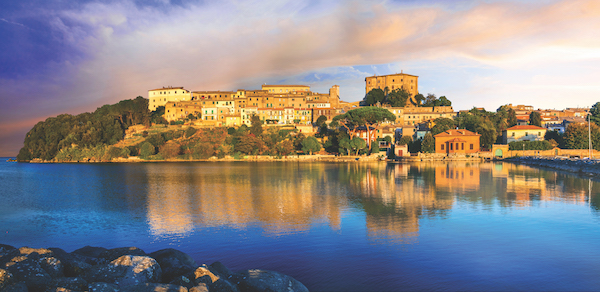
All roads lead to Rome. But they can also lead out of it, and exploration pays off. Italy’s capital city might be one of the country’s most famous and most visited places, but few non-Italians know much about the region this city sits in. Lazio is a predominantly rural, spacious place blessed with lovely landscapes. Basking in its warm central Italian climate are leafy hills, crystal-clear lakes, uncrowded beaches and peaceful little towns stuffed with fine architecture.
Rome is hard to ignore, and one of the big pluses of Lazio is the unrivalled opportunity it offers to hop between capital city glitz and deep rustic tranquillity. Each is readily available to counter the other when you need it. Rome is Italy’s very biggest and most populous city (it’s more than twice the size of second city Milan), but the rest of Lazio is tranquil and thinly-populated, its wild and agricultural spaces punctuated by friendly towns and sleepy villages where everyone knows everyone else and the sense of community is very strong.
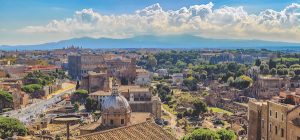
Millions of people flock to Rome every year to ooh and ahh over its dazzling ancient remains, but rural Lazio has historical relics to die for too. Out in the region’s countryside, you’re likely to stumble across giant-cobblestoned Roman roads in cropfields, crumbling old amphitheatres out in the woods or overgrown Etruscan tombs incised with Greek letters written backwards. Arguably, ancient history comes to life in rural Lazio even more than it does in the Eternal City, if only because out here it hasn’t been dug up, cleaned up, reconstructed or neatly laid out with information panels. By just still sitting there undisturbed in the undergrowth, it seems to provide an even more direct and vivid link to the past.
Rome isn’t the only place that diverts many a would-be visitor to Lazio’s countryside, of course. The region also has some pretty seductive neighbours. Tuscany and Umbria border half of Lazio, and lovers of hills, vineyards, sunshine and wine are more likely to head for these more famous swathes of Italy, not realising that they can enjoy exactly the same kind of thing in Lazio, but for rather less money and with far fewer tourists around. It’s a similar story with property, of course. Country homes in Tuscany or Umbria are far pricier than similar properties set in comparable landscapes in Lazio.
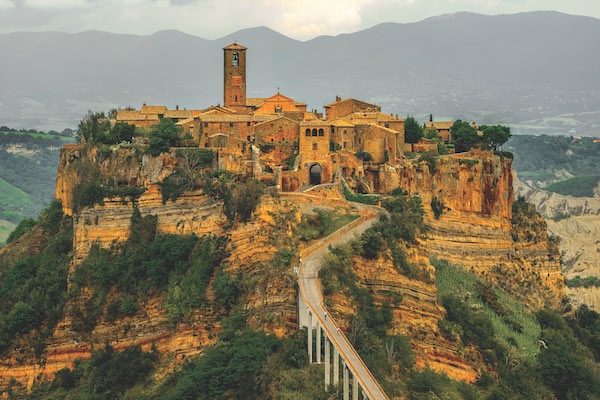
Market and prices
Rural homes in Lazio can often represent a bargain. The region’s country homes were becoming steadily more popular in the noughties and prices were rising, but then the financial woes of 2008 onwards began arresting the foreign-buyer property market all over rural Italy and prices stopped going up. Today, country homes in Lazio are often a little cheaper than they might have been ten years ago, so you may well get even more property for your money now.
Rome is a different kettle of fish, or ‘a different pair of sleeves’, as the Italians put it (un altro paio di maniche). Rome has long been one of Italy’s most coveted – and expensive – places for property. Foreign buyers fall for the city in a big way, revelling in its lively and sophisticated atmosphere, and making the most of the excellent year-round holiday rental prospects that any property here enjoys.
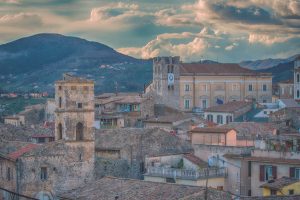
The world’s wealthy have been the least affected by the past decade’s financial problems, and so top-end properties in Rome haven’t suffered much of a dent in price or buyer-interest over that time. Lower down the scale, you can still find more affordable homes in the Italian capital if you choose your area well. A nicely-situated apartment would draw a reliable abundance of rental clientele, and this can help to cover many of your costs.
As for actual prices, here’s a very rough guide. In rural Lazio, you might get a small house in a fairly remote village for as little as €50,000. Go somewhere more accessible and you might still pay only €100,000 or so for a house in a village or small town. Rustic farmhouses needing restoration start at about €120,000, and fully-restored country homes get going at about €200,000. Obviously these are starter prices and there are plenty of larger and more luxurious properties available for higher figures. Rome, as we’ve already noted, is in a rather different league when it comes to property costs. Two-bedroom apartments in reasonably central locations can ask €300,000 or more. But as in every city, you can save money by buying further out from the centre.
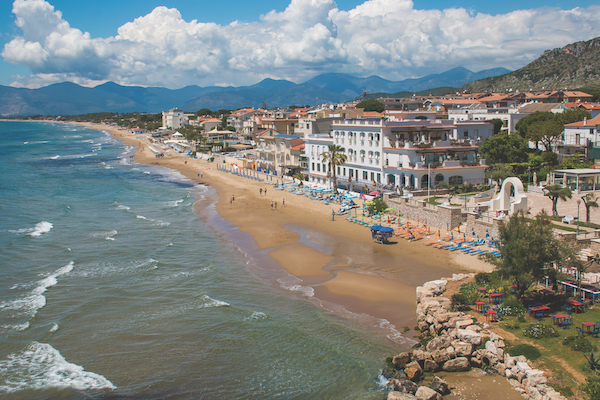
Country delights
As you’ll have gathered by now, Lazio can be split into its rural and urban markets. Let’s start with the region’s delightful countryside. Seekers of a rural idyll in Lazio would do well to consider four key areas. The first is the very beautiful northwest of the region where Lazio meets Tuscany and Umbria. The second is the peaceful Sabine Hills area in the northeast. The third is the Alban Hills area a dozen miles southeast of Rome. And the fourth is the wild Ciociaria area in Lazio’s far southeast.
Lazio’s northwest is an enchanted-feeling area stuffed with geographical loveliness and history-rich towns. Soft, fertile hills ring a trio of glittering lakes: Bolsena, Vico and Bracciano. In addition to this freshwater loveliness, the Mediterranean is only a short drive away, with the wild, empty beaches of the Maremma and the swanky resorts of Monte Argentario both within easy reach. Of all Lazio’s rural areas, the northwest has become perhaps the most popular with foreign homebuyers. That said, there’s certainly no overcrowding or overdevelopment here. Village homes can be had from around €100,000 and farmhouses from around €180,000. Note that the blissfully beautiful Lake Bolsena area is cheaper than gorgeous Lake Bracciano thirty miles further south, as this latter lies within commuting distance of Rome.
The Sabine Hills area in Lazio’s northeast is another restful, leafy delight. Medieval villages and old castles dot its rolling countryside, and quite a few foreign buyers have succumbed to the area’s charms. Lovers of Rome might prefer the Sabines to northwesternmost Lazio as parts of these hills can give slightly easier access to the capital. It is perhaps for this reason that property prices here are comparable to those in northwest Lazio, despite the Sabine Hills not having the closeness to the coast that the northwest enjoys. As you might expect, prices in the northeast will drop as you climb into the area’s highest elevations.
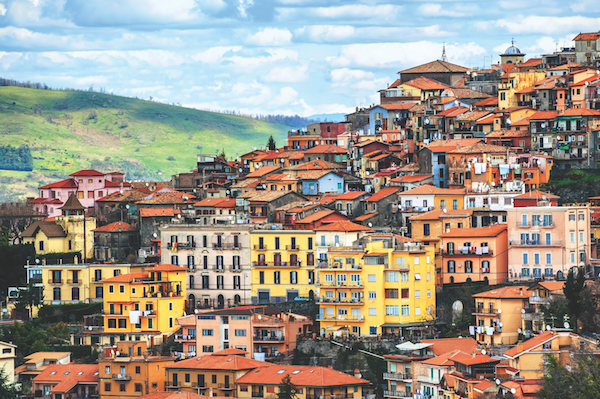
More country delights
Buyers hoping to make frequent visits to Rome while still enjoying a restful rural base should investigate the enchanting Alban Hills a dozen miles or so southeast of the capital. This remarkably unspoilt area features lushly fertile volcanic hills and cradles the gem-like little lakes of Albano and Nemi. Attractive towns here include Frascati and Palestrina. The sea isn’t too far off, of course, and beaches south of Rome are long and broad, backed by some cheery resort towns.
If what you really want is Lazio’s very cheapest rural property, you should head further southeast into the rather wild and majestic ‘Ciociaria’ area. Pronounced ‘cho-cha-REE-a’, this interesting place stretches roughly from the elegant old spa town of Fiuggi to the dramatic hilltop abbey of Montecassino about forty miles away. Ciociaria holds some charming little towns such as Alatri and Veroli, and while the latter has already drawn quite a few foreign buyers, generally this whole swathe of Lazio still has something of a ‘well-kept secret’ feel to it, and has prices to match. Note that there are plenty of properties down here that might appeal to restorers and renovators, as well as no shortage of perfectly habitable homes to buy.
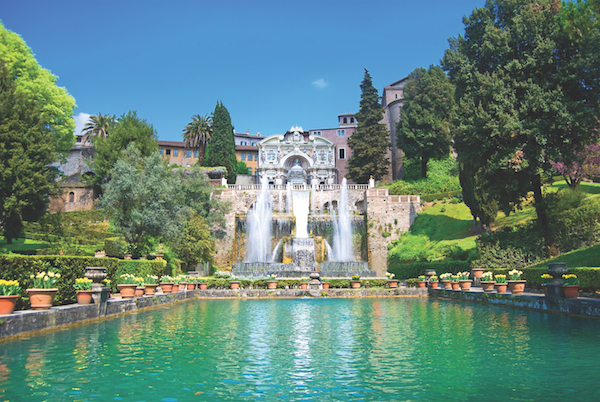
No place like Rome
Perhaps, like many people, all you really want is a bolthole in the colourful, voluble, excitable and energetic national capital. People fall for Rome in a big way, and many just want to keep coming back. Popularity means high prices, and Rome is among Italy’s most expensive place to buy. Centrally-located two-bedroom apartments can go for €300,000 upwards. Holiday rental returns, however, are superb. More than twelve million visitors come through Rome every year, and they arrive in every season not just the summer. Many buyers in Rome offer holiday lets on their home here to help cover their costs.
Money spent on a home in Rome is likely to be very safely invested, of course. City properties everywhere tend to hold their value more tenaciously than homes elsewhere, weathering well the vicissitudes of the wider economy. As in any capital city, people are not going to stop wanting a place to live in Rome, and as the city can hardly squeeze a glut of new homes into its existing built environment, all homes here remain very desirable. A big advantage of having a holiday home in Rome is the comparative speed with which you can reach it. Your plane will touch down (or your train roll into the station) not many miles from your front door. There’s no subsequent 90-minute journey out to a house in the wilds. As an owner of a home in Rome, you’d be able to enjoy frequent short visits if you wanted to.
Different districts of Rome come in and out of fashion over time. The centro storico is perennially prized, but other districts that have proven popular or been particularly recommended for buyers in recent years include arty Trastevere, hip Testaccio, boho Pigneto, studenty San Lorenzo, elegant Parioli and plush Prati. The usual rules apply if you’re looking to maximise a property’s rentability: try to get a home with a balcony, terrace or patio, and with easy access to the city centre either on foot or by public transport.
Useful contact
ItaliaCasa
Find out more with Fleur’s Lazio regional property guide
Lazio property picks
[slideshow_deploy id=’23090′]
